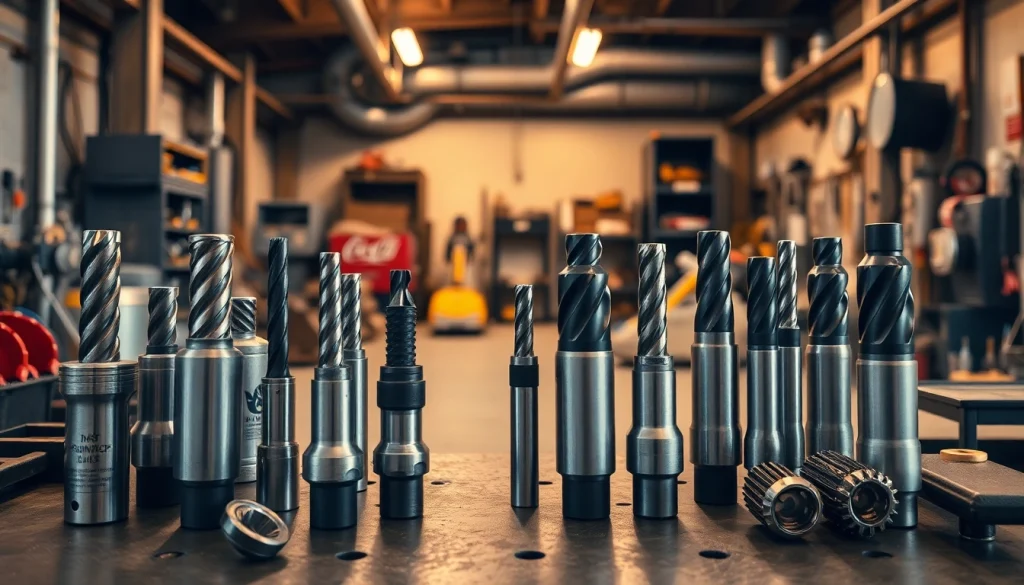Understanding Drill Chucks
When it comes to power tools, having the right accessories can significantly enhance performance and efficiency. One key component that often gets overlooked is the drill chuck, which plays a crucial role in how effectively a drill operates. This article will delve into the various types of drill chucks, how they function, and why selecting the right one can impact your projects. Whether you are a seasoned professional or a DIY enthusiast, understanding drill chucks is fundamental for maximizing your tool’s capabilities.
What is a Drill Chuck?
A drill chuck is a specialized clamping device used to hold drill bits and other cutting tools securely in place. It attaches to the spindle of a drill, allowing for the rotation of the bit while ensuring that it remains locked in the correct position during use. Drill chucks come in different types and sizes, accommodating various applications and drill models. They are a pivotal part of any power tool, facilitating the accurate and efficient drilling of materials such as wood, metal, and plastic.
Types of Drill Chucks: Keyed vs. Keyless
Drill chucks are primarily classified into two categories: keyed and keyless. Each type has its advantages and disadvantages, depending on the user’s needs and the specific application.
Keyed Drill Chucks: These chucks utilize a key to tighten or loosen the grip on the drill bit. The primary advantage of keyed chucks is their ability to hold the bits more securely, which can be beneficial for high-torque applications. They are often used in industrial settings where precision and stability are paramount.
Keyless Drill Chucks: These are designed for convenience, allowing users to change bits quickly without the need for an additional tool. Users can tighten or loosen the chuck by hand, making them ideal for light to medium-duty tasks and frequent bit changes. Keyless chucks have become increasingly popular in consumer-grade drills thanks to their ease of use.
How Drill Chucks Work: Mechanics Explained
The inner mechanics of a drill chuck involve a series of jaws that grip the drill bit. When the chuck is tightened, these jaws draw inward to firmly hold the bit in place. With keyed chucks, the user inserts the key into the chuck and rotates it, moving the jaws into a tighter position. In the case of keyless chucks, rotating the outer sleeve moves the jaws, and the friction created allows for a secure grip.
Understanding how these components work together can help users determine which chuck is best suited for their specific drilling needs. Some high-end keyless chucks even feature automatic locking mechanisms for added safety and stability.
Choosing the Right Drill Chuck for Your Needs
Selecting the appropriate drill chuck is critical for ensuring optimal performance during drilling tasks. Below are essential factors to keep in mind while choosing the right chuck for your powers drills.
Factors to Consider: Size and Compatibility
When choosing a drill chuck, the first consideration should be its size and compatibility with the drill. Typical drill sizes include 1/2 inch and 3/8 inch. It’s crucial to ensure that the chuck matches the spindle size of your drill to avoid compatibility issues.
If you’re using multiple drill bits, consider investigating chucks with adjustable capacities. Many keyless chucks can accommodate various bit sizes, allowing for greater flexibility in projects. However, some keyed chucks are highly specialized, and opting for a standard size can make bit replacements simpler.
Performance Metrics: Precision and Torque
Performance metrics, such as precision and torque, should also be evaluated when selecting a chuck. Precision refers to how accurately the drill bit can create holes. High-quality chucks help maintain concentricity, which is essential for tasks that require precise alignment.
Torque, on the other hand, refers to the amount of rotational force the drill uses to turn the bit. A chuck designed for high torque applications will provide a secure grip on the bit, minimizing the risk of slippage. Understanding the application’s requirements will guide you to a suitable chuck that meets performance expectations.
Brand Recommendations: Top Picks for Drill Chucks
The market offers numerous reputable brands known for their quality drill chucks. Notable mentions include:
- Jacobs: Renowned for their sturdy keyed chucks, Jacobs offers a variety of options tailored for high-performance tasks.
- Albrecht: Considered a top-tier brand, Albrecht provides precision keyless chucks that are highly regarded for their accuracy and longevity.
- Rӧhm: Their keyless chuck configurator allows users to identify the ideal chuck based on specific needs, offering many tailor-made solutions.
- Festool: Known for high-quality wooden and CNC tool applications, Festool drill chucks deliver consistent performance in demanding environments.
Installation and Maintenance of Drill Chucks
Proper installation and maintenance of drill chucks are vital to ensuring their longevity and efficient performance. Below are some fundamental steps and tips to guarantee optimal operation.
Step-by-Step Guide to Installing a Drill Chuck
Installing a drill chuck is a straightforward process. Here’s a step-by-step guide:
- Disconnect the Power: Always ensure your drill is disconnected from its power source before starting any installation process.
- Remove the Existing Chuck: If you are replacing a chuck, use the appropriate wrench to loosen and remove the existing chuck from the spindle.
- Align the New Chuck: Position the new chuck onto the spindle, ensuring it fits snugly and is aligned correctly.
- Tighten the Chuck: Use the wrench to tighten the chuck onto the spindle securely. Make sure it is fastened properly to avoid any slippage during operation.
- Test for Secure Fit: Before using your drill, manually rotate the chuck to check if it’s locked in position. Ensure no movements occur that would indicate a loose fit.
Common Maintenance Tips
To maintain your chuck in peak condition, consider implementing the following practices:
- Regular Cleaning: Keep your chuck and drill area clean to prevent debris buildup, which can affect performance.
- Lubrication: Periodically lubricate the inner mechanism of keyed chucks to facilitate smooth operation.
- Proper Storage: Store your drill and accessories in a dry place, avoiding exposure to moisture that can lead to rust.
- Inspect for Damage: Regularly check for signs of wear and tear, such as cracks or looses seams, which may require immediate replacement.
Signs of a Worn-Out Drill Chuck
Detecting failure or wear in your drill chuck early on can save you from more significant issues later. Some common signs of a worn-out chuck include:
- Slipping of Bits: If bits constantly slip during use, this is an indicator that the chuck is worn out or damaged.
- Excessive Play: Any noticeable wobbling or movement of the drill bit while in operation could suggest a problem with how well the chuck holds the bit.
- Inability to Tighten: If the chuck no longer tightens effectively, it may need to be replaced to ensure that bits stay secure during operation.
Applications of Drill Chucks Across Industries
Drill chucks find their utility across multiple industries, proving essential for various applications. Here are some key areas where drill chucks are utilized:
Drill Chucks in Woodworking
In woodworking, precision is critical. The right drill chuck can ensure that bits remain firmly in place, allowing for accurate drilling of holes at varying depths. Whether for cabinet making or intricate wood assembly, a high-quality chuck ensures consistent results, enhancing craftsmanship.
Use in Metalworking: Precision and Accuracy
Metalworking applications often require high torque and precision. Drill chucks used in this field must provide excellent stability to maintain concentricity, minimizing the risk of drill bit breakage and allowing for clean cuts. Keyed chucks are typically preferred for their secure grip in heavy-duty applications.
Specialized Applications: CNC and Robotics
CNC machines and robotic arms often rely on specialized drill chucks designed to provide optimal performance in automated settings. These applications require chucks that can handle variable speeds and torque levels, facilitating high precisions and enhancing the overall efficiency of manufacturing processes.
Frequently Asked Questions About Drill Chucks
How to Replace a Drill Chuck?
Replacing a drill chuck typically involves first removing the worn-out chuck by loosening it with a chuck key or wrench, depending on type. Then, you can follow the installation steps previously outlined to securely attach a new chuck to the drill.
What are the Benefits of Upgrading Your Drill Chuck?
Upgrading your chuck can significantly enhance your drill’s performance. Modern chucks offer better grip, faster bit changes, and increased durability, reducing frustration and downtime in your projects.
Can I Use a Drill Chuck on Different Drill Types?
Many drill chucks can be used across different drill types, as long as the chuck and drill share compatible spindle sizes. However, make sure to adhere to specific torque requirements and application types for maintaining optimal performance.


